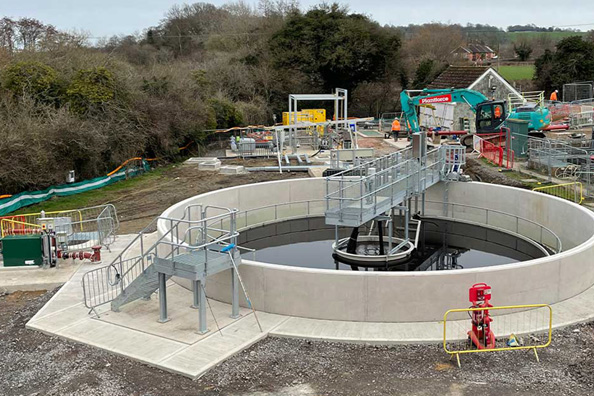What are we doing to protect our rivers and beaches?
As the water sector announces the biggest shake-up of the sewerage network since the Victorian era, we have outlined our plans to increase investment to tackle storm overflows.
What have we done this year?
During the last year, we have invested £69 million to protect the region’s rivers and beaches. This involved multi-million-pound schemes to deal with heavy deluges of rainwater to reduce storm overflows.
We currently invest around £3 million per month on improving storm overflows, which are licensed to operate automatically during or after heavy rainfall to protect properties from flooding.
There has also been major investment to remove phosphorus and other nutrients through advanced treatment at water recycling centres, work which is further safeguarding and improving river ecology.
Find out more about what we are doing to tackle storm overflows.

Increasing our investment
Since 2000, we have upgraded nearly 600 storm overflows and current investment will reduce the number of hours storm overflows operate by approximately 25% by 2025.
But from 2025, we are proposing to do even more by increasing how much we invest to make further improvements to storm overflows.
Matt Wheeldon, Director of Infrastructure Development, said: “We know our customers care passionately about protecting watercourses, whether or not they use them for swimming or recreation, and we share their passion.
“That’s why we’re investing unprecedented amounts to help improve river and coastal water quality, including reducing how often storm overflows operate and minimising the environmental impact of our treatment processes.”
Reducing overflows near bathing waters
Water quality at beaches is assessed by the Environment Agency and most in the Wessex Water region are classified as ‘Excellent’.
Storm overflow discharges halved near designated bathing waters in 2022 due to a combination of prolonged dry weather and our investment.
We were also the first UK company to publish data on overflow operations 365 days a year and provide information on bathing waters and other recreational areas to local councillors and Surfers Against Sewage.
You can stay up to date with when our storm overflows near bathing waters operate using our coast and rivers watch map.

Our solutions
Ideally, we would stop all storm overflow discharges immediately but unfortunately there is no quick fix - eliminating them completely would mean re-plumbing a sewerage system which has been built in this way for over 150 years.
Some of the main solutions we're rolling out include:
- separating out rainwater to stop it from entering sewers
- constructing large storage tanks to contain the combined rain and sewage for later treatment
- plans for nature-based solutions such as natural wetlands and reed beds.
It is vital that regulators support these schemes to help reduce carbon impacts, minimise bill rises for customers and greatly improve river water quality.
Monitoring and improving water quality
Numerous other factors can affect water quality, including wildlife and agricultural run-off, and we are working with farmers through our catchment management partnerships to deliver cost-effective solutions.
As water quality is affected by various sources and river users want to know more, we developed an Artificial Intelligence (AI)led app which predicts bacteria levels using other parameters that can be continuously obtained from sensors within bathing or recreational waters.
Matt added: “We’ve already used AI to provide real-time water quality information at Warleigh Weir, near Bath, Baltic Wharf in Bristol and in Poole Harbour where we are providing water quality forecasts for the shellfishery and recreational businesses.
“We have identified over 50 other river locations across our region popular for recreation and we’re working with local authorities and community groups to provide better information on water quality, temperature and river flow."


